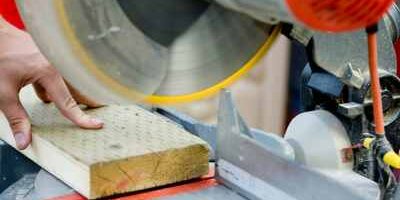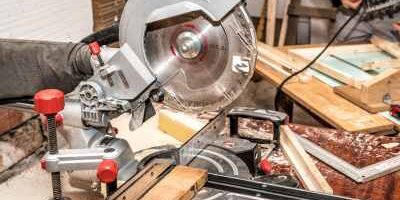A miter saw is a versatile cutting tool that can be used to make angled cuts in different materials. It is an essential tool for DIY enthusiasts, woodworkers, and professionals who work with wood, metal, and plastic. This guide will look closer at miter saws, their types, uses, and how to choose the right one for your needs.
Types of Miter Saws
There are three main types of miter saws:
- Compound Miter Saw: This type of miter saw can make bevel cuts (angled cuts) in one direction, either to the left or the right. It can also make miter (angled) cuts in both directions, to the left and right. A compound miter saw is ideal for making angled cuts for crown molding or picture frames.
- Dual-Bevel Compound Miter Saw: This miter saw can make bevel cuts in both left and right directions without flipping the workpiece. It makes compound angles for trim work, door frames, and other complex projects.
- Sliding Compound Miter Saw: This type of miter saw can make sliding cuts in addition to bevel and miter cuts. It is ideal for cutting wider materials such as large crown molding or wide boards.
Uses of Miter Saws
Miter saws can be used for a wide range of cutting applications, including:
- Crown molding: Miter saws are perfect for cutting crown molding for the ceiling. They can make precise angled cuts, ensuring that the molding fits perfectly.
- Baseboards: Miter saws can make clean, straight cuts on baseboards, ensuring they fit snugly against the wall.
- Picture frames: Miter saws are ideal for making precise angled cuts for picture frames. This ensures that the joints are tight and the frame looks professional.
- Door frames: Miter saws can make angled cuts for door frames, ensuring the frame fits perfectly.
- Decking: Miter saws can make angled cuts for decking, ensuring that the boards fit perfectly.
How to Choose the Right Miter Saw
Choosing the right miter saw can be a daunting task, given the many options available in the market. Here are some factors to consider when choosing a miter saw:
- Blade size: Miter saws come in different blade sizes, ranging from 8 inches to 12 inches. The blade size determines the maximum width and depth of cut. Choose a blade size that matches the thickness of the material you will be cutting.
- Bevel capacity refers to the maximum angle the blade can tilt to the left or right. Choose a dual-bevel compound miter saw if you plan to make angled cuts in both directions.
- Motor power: The motor power determines the cutting capacity of the miter saw. Choose a miter saw with a motor power that matches the thickness and density of the material you will be cutting.
- Laser guide: Some miter saws come with a laser guide that helps to improve cutting accuracy. Consider a miter saw with a laser guide if you need precise cuts.
- Dust collection: Miter saws generate a lot of dust. Choose a miter saw with a dust collection system to keep your work area clean.
Conclusion
A miter saw is a versatile tool that can make angled cuts in different types of materials. When choosing a miter saw, consider the blade size, bevel capacity, motor power, laser guide, and dust collection system. With the right miter saw, you can make precise cuts for crown molding, baseboards, picture frames, door frames, and decking.
Manufacturer


